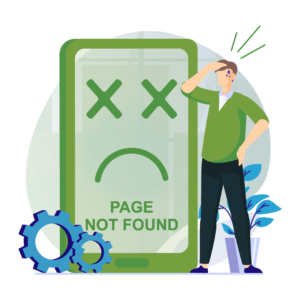In today’s world, we all rely on online shopping and E-Commerce. Thanks to the digital transformation, despite this trend, many businesses struggle with modern challenges, often making the wrong moves that lead to their e-commerce projects failing. This blog will highlight the main reasons for the e Commerce project failures. Join us as we uncover the common missteps that can turn a promising e-commerce project into a disappointment.
The Most Common Mistakes that Causes of Project Failure
Unclear Business Strategy:
The success of E-commerce projects pivots on a well-defined company plan and a strategy that aligns with the purpose of the platform. For instance, specifying whether the platform is designed for Business-to-Consumer (B2C) or Business-to-Business (B2B) transactions is crucial. When there’s a lack of alignment between management and project implementation teams on this fundamental aspect, numerous problems arise. Each path, whether B2C or B2B, demands distinct functionalities and technicalities. Without a clear strategy and purpose, the project risks team uncertainty, leading to misunderstandings, inefficiencies, and will increase an overall project risk of failure. Examples of a clear strategy could include prioritizing user-friendly features for a B2C platform or implementing robust inventory management for a B2B platform.
Poor Website Design and User Experience (UX) Issues:
Digital stores with a well-organized and attractive environment usually attract more customers. Your company’s website or mobile app functions as the virtual store. You have to Make a design that fits perfectly to your targeted audience’s needs. It must have a good user interface (UI) and user experience (UX). It should be user-friendly, perfectly designed, conversion optimized, and to be self explanatory enable users to browse and use. easily without need for help. Potential clients are likely to give up on your platform to find an easier shopping experience on another platform if it becomes difficult to use or if it is devoid of essential features.

Ineffective Use of Analytics and Data-Driven Decision-Making in Marketing and Customer Acquisition:

Inability to Adapt to Developing Market Trends in Customers and Markets:
As technology keeps changing, e-commerce grows too. Our competitors keep improving, making competition more challenging. To stay in the game, companies must keep up with new tech, trends, and what customers like. This might mean modifying their website, updating products, changing how they market, or even redoing their whole business plan.
Example: People tend to pay online. Not everyone likes to pay in cash upon receipt. It is important to provide an online payment service to make it easier for customers.

Poor Customer Service:
Customer service stands out as a crucial aspect for every e-commerce business. It’s vital to offer prompt and useful responses to customer queries, swiftly address issues, and strive to exceed customer expectations. With digital transformation and the development of technology, it has become difficult to respond to everyone, so the solution lies in linking the most common questions with artificial intelligence and providing the target customers with a chatbot.

